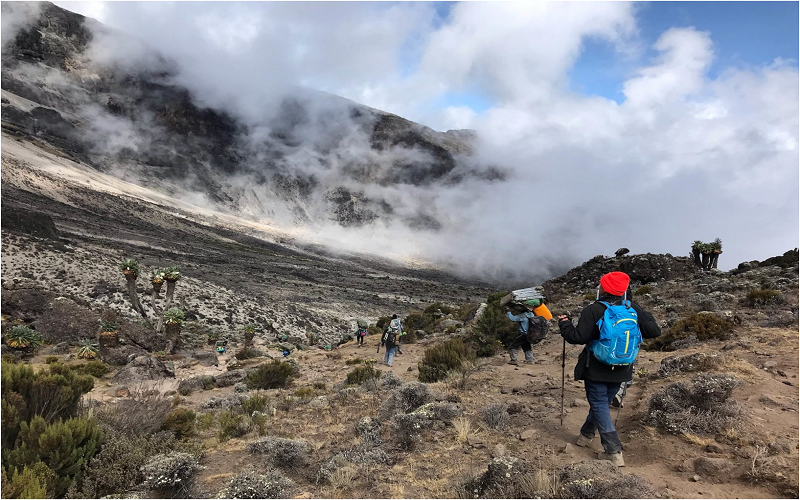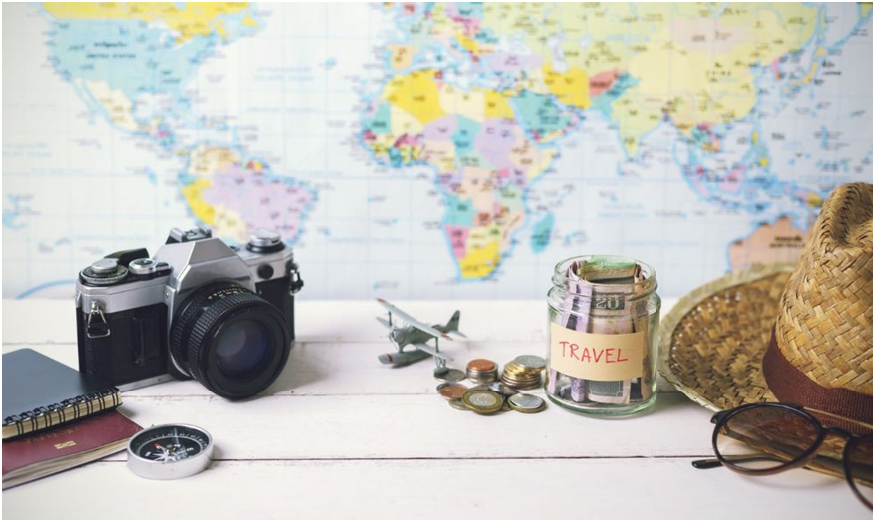Introduction to the Everest Base Camp trek Experience
Trekking to Everest Base Camp is a dream woven into the creative energy of incalculable travelers, pilgrims, and experienced searchers over the globe. Settled in the heart of Nepal’s grand Himalayas, the Everest Base Camp (EBC) path is a trek that conveys not just beautiful excellence, but a significant association to the earth’s most elevated scenes and the unyielding human soul. Whether you are looking for the physical challenge, otherworldly enhancement, social profundity, or sheer excitement of being near Mount Everest—the most noteworthy peak on the planet at 8,848.86 meters—the Everest Base Camp trek offers an involvement like no other.
From the minute you board the little airplane that takes off from Kathmandu and takes off toward Lukla, you know you are venturing into the arrival of monsters. The sees have gotten more sensational with each step as snow-capped peaks linger closer, supplication banners ripple over mountain passes, and centuries-old religious communities offer calm reflection. The Everest Base Camp tour can moreover be experienced through beautiful helicopter flights, advertising an airborne point of view of this imposing landscape, whereas Everest Base Camp trek packages cater to a wide run of preferences—from tough hikers to extravagance travelers. This path isn’t fair around the goal; it’s approximately each dawn over white summits, each shared story in a teahouse, and each hard-earned step on the rough ways of the Khumbu.
Why trek to Everest Base Camp?
There are numerous lovely places on Soil, but few command the kind of respect that Everest does. Everest Base Camp trekking is to take an interest in a bequest of investigation that dates back about a century. But past the bragging rights and Instagram-worthy photographs, trekking to EBC is about to change.
Each individual who takes on the path finds something inside themselves—resilience, lowliness, strength, or clarity. As you climb through thick woodlands, cross thundering waterways on suspension bridges, and climb over fruitless frosty fields, you are not as it were moving through a peakographical space, but moreover through layers of individual discovery.
Unlike coming to a summit, trekking to the base of Everest offers more availability to trekkers with sensible wellness, making it one of the most famous and achievable bucket-list treks in the world. The physical effort is counteracted by the enthusiastic rewards: seeing Everest with your claim eyes, feeling the fresh mountain discuss, and sharing the path with other visionaries. It is not basically a walk—it’s a travel that shapes points of view and welcomes reflection.
Where Is Everest Base Camp Located?
Everest Base Camp is found in the northeastern region of Nepal, inside Sagarmatha National Speak, in the Khumbu Valley. The base camp sits at a rise of 5,364 meters (17,598 feet) and serves as the essential propelling point for mountain climbers endeavoring to summit Mount Everest by means of the Southeast Edge. The trek to base camp ordinarily starts from the town of Lukla, which is available by a brief flight from Kathmandu.
From Lukla, the course winds through an arrangement of conventional Sherpa towns counting Phakding, Namche Bazaar, Tengboche, Dingboche, and Lobuche. Along the way, the path offers breathtaking views of not as it were Everest but also other notorious peaks such as Ama Dablam, Lhotse, Nuptse, and Pumori. The region lies inside a UNESCO World Legacy Location and is wealthy in biodiversity, with ruddy pandas, snow panthers, Himalayan monals, and musk deer calling it domestic. The sheer remoteness and quietness of Everest Base Camp make coming to it a significant accomplishment for trekkers.
The History Behind the Everest Trail
The way to Everest Base Camp is soaking in history. Whereas Mount Everest had long held otherworldly noteworthiness for the Sherpa individuals, it was to begin with brought into worldwide consideration when British surveyors distinguished it as the world’s most noteworthy peak in the 19th century. But the present day history of trekking in the region started in earnest in the early 1950s. In 1953, Sir Edmund Hillary of Modern Zealand and Tenzing Norgay Sherpa of Nepal effectively came to the summit of Everest, setting the path on the outline for globe-trotters worldwide.
Since then, thousands have taken after in their footsteps—not to the summit fundamentally, but to the base camp, which has become an image of experience and worldwide participation. The path itself has ended up a living exhibition hall of mountaineering history, with commemorations to fallen climbers dabbing the high-altitude ways. It is too otherworldly travel, resounding the strides of ministers and travelers who have strolled this arrival for centuries. The towns you pass along the way still hold onto antiquated traditions, and the cloisters proceed their sacrosanct homes undisturbed by the cutting edge world.
How difficult is the Everest Base Camp Trek?
While the Everest Base Camp trek does not require specialized climbing aptitudes or ropes, it is not a simple climb. The essential challenge is the height, with the path steadily climbing from 2,840 meters in Lukla to 5,364 meters at base camp. At such rises, oxygen levels drop essentially, and the chance of Intense Mountain Affliction (AMS) becomes a genuine concern. Appropriate acclimatization is crucial, and most trekking schedules incorporate rest days in places like Namche Bazaar and Dingboche to permit the body to adjust.
On a physical level, trekkers ought to be arranged to climb between 5 to 7 hours per day on a shifted landscape that incorporates stone steps, woodland trails, frosty ways, and tall mountain edges. You’ll be carrying a daypack, and whereas doormen can oversee your heavier adapt, your wellness, stamina, and mental assurance will be vital. Be that as it may, with continuous preparation, arrangement, and the right mentality, most sound people can total the trek effectively. The genuine key lies in pacing yourself, remaining hydrated, eating well, and tuning in to your body each step of the way.
Everest Base Camp trek Elevation Profile
Understanding the elevation picked up amid the trek makes a difference when you get ready rationally and physically. Here’s a rearranged height breakdown of the conventional route:
Lukla (2,840 m) – trek starts after your flight from Kathmandu.
Phakding (2,610 m) – To begin with overnight remains, somewhat lower than Lukla to ease acclimatization.
Namche Bazaar (3,440 m) – A major acclimatization halt with great amenities.
Tengboche (3,860 m) – Popular for its cloister and all encompassing views.
Dingboche (4,410 m) – Another acclimatization point.
Lobuche (4,940 m) – The discussion gets more slender, and the scene more barren.
Gorak Shep (5,164 m) – Last overnight some time recently the base camp was pushed.
Everest Base Camp (5,364 m) – The trek’s climax, settled at the foot of the Khumbu Icefall.
Kala Patthar (5,545 m) – The most elevated point of the trek and best perspective of Mount Everest.
Each step upward brings more slender discussion and more prominent introduction, making it basic to take after a legitimately outlined schedule and remain watchful around side effects of height sickness.
Best Time of Year to trek to Everest Base Camp
The Himalayas are a world of extremes, and choosing the right season can make or break your encounter. The best times to trek to Everest Base Camp are:
Spring (March to May): Wildflowers sprout, skies are for the most part clear, and the temperatures are guide. This is the perfect time for photography and all encompassing sights. The trails are busier, but the vitality is high.
Autumn (late September to early December): Post-monsoon clarity brings fresh skies and cooler temperatures. It’s a favorite among prepared trekkers for its soundness and visibility.
Winter (December to February): Treks are still conceivable, but the temperatures drop essentially, and snow may square certain parts of the path. It’s less swarmed, advertising a peaceful involvement for the prepared.
Monsoon (June to early September): By and large dodged due to overwhelming downpours, sloppy trails, and cloud cover. In any case, the rich greenery and less trekkers may be a request to some.
For those choosing the Everest Base Camp tour by helicopter, spring and harvest time moreover give the best flying conditions and perceivability. Your choice of Everest Base Camp trek ought to adjust with these regular variables to maximize consolation and safety.
Cultural Experiences with the Sherpa People
Beyond the peaks and the ways, one of the wealthiest viewpoints of the Everest Base Camp travel is the social experience with the Sherpa community. Famous for their incredible mountaineering abilities, the Sherpa individuals are the soul of the Khumbu region. These strong mountain tenants offer warm neighborliness, deep-rooted Buddhist conventions, and intriguing stories passed down from era to generation.
As you pass through Sherpa towns like Namche Bazaar, Pangboche, and Khumjung, you’ll see conventional stone homes, supplication wheels turning in the wind, and complicatedly painted mani stones lining the path. Going to the Tengboche Cloister, the otherworldly center of the region, gives a glimpse into the customs, chanting, and day by day lives of friars who live in agreement with the mountains. Numerous trek packages incorporate openings to lock in with Sherpa guides and watchmen, giving you a bona fide way of life.
Sharing dinners in nearby teahouses, tuning in to stories around the fire, and partaking in territorial celebrations (in case your timing is right) turn your trek into more than fair a hike—it gets to be a social submersion. The Sherpa’s relationship with the arrival and their otherworldly love for the mountains remind trekkers to regard not as if it were nature but the individuals who call this home.
Conclusion:
The Everest Base Camp trek is more than a physical endeavor—it’s a profoundly individual and transformative section into the heart of the Himalayas. With the right Everest Base Camp trek package, this life-changing experience gets to be available, comfortable, and motivating. Whether you walk each step through the Khumbu Valley, fly over its peaks on an Everest Base Camp tour, or combine both encounters into one exceptional travel, the compensation is continuously the same: a significant association to the most noteworthy put on Soil and the soul that drives humankind to reach it.
The street to Everest isn’t fair, almost all of the summits and snow. It’s almost boldness, revelation, and the stories you’ll carry for a lifetime. Let this be your minute to walk to the world’s tallest peak—and return until the end of time has changed.
Booking Process by Adventure Great Himalaya Treks:
To book any of these treks tours through Adventure Great Himalaya A Best Trekking Company In Nepal ,To discuss your preferred dates, group size, and specific needs. They will provide a detailed itinerary covering these trek’s duration, highlights, cost, and inclusions such as a guide, porter, meals, accommodation, and transportation.
Prior to the trek, you will receive a comprehensive pre-trek briefing with essential information on packing, fitness preparation, and altitude acclimatization. The agency will finalize all logistical arrangements, including transportation, accommodation, and permits, to ensure everything is in place for your trek. Upon arrival in Nepal, the team will ensure that all aspects of the trek are organized, providing you with a smooth and unforgettable experience on these treks.





